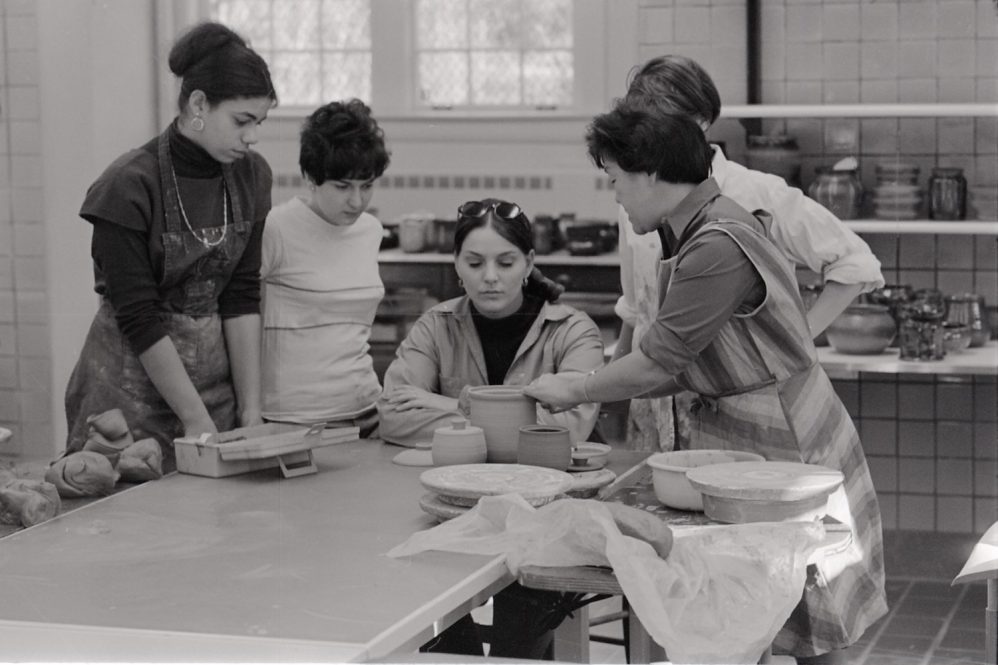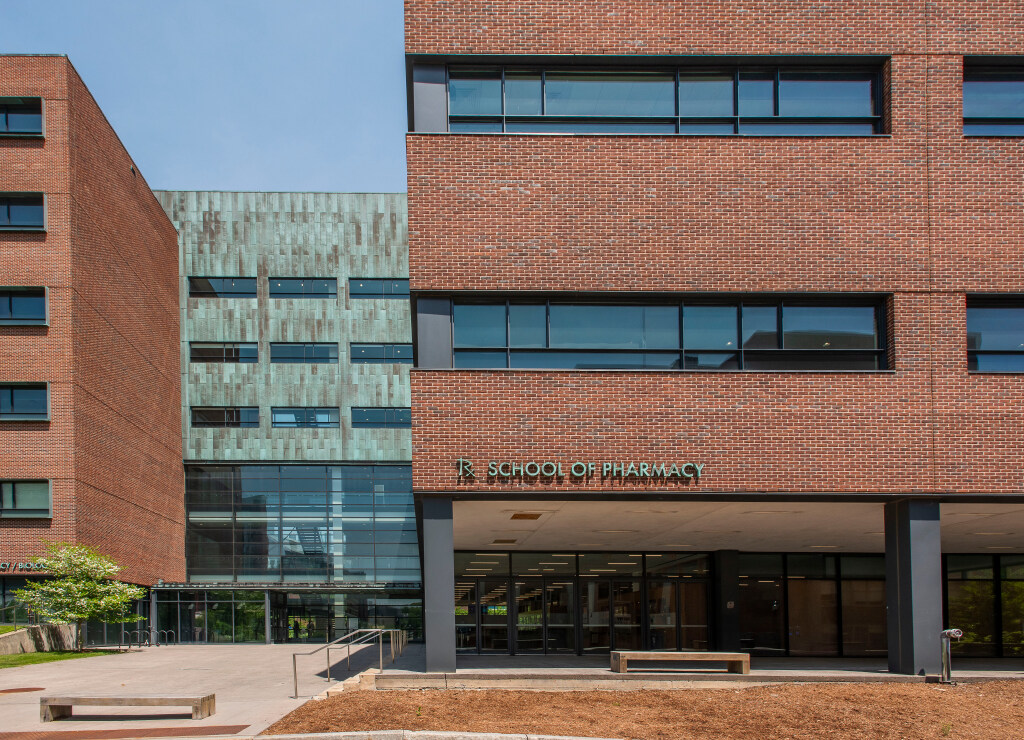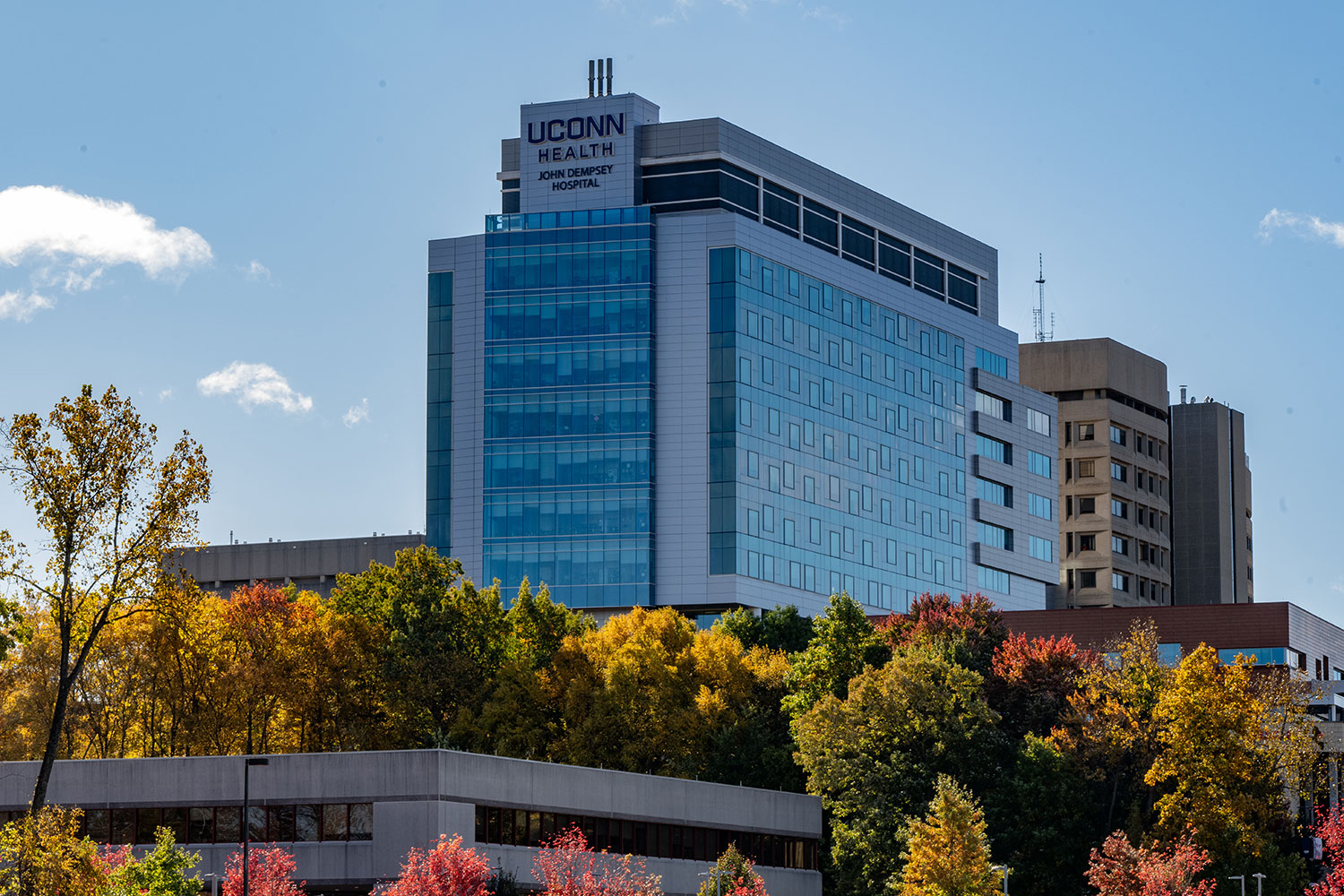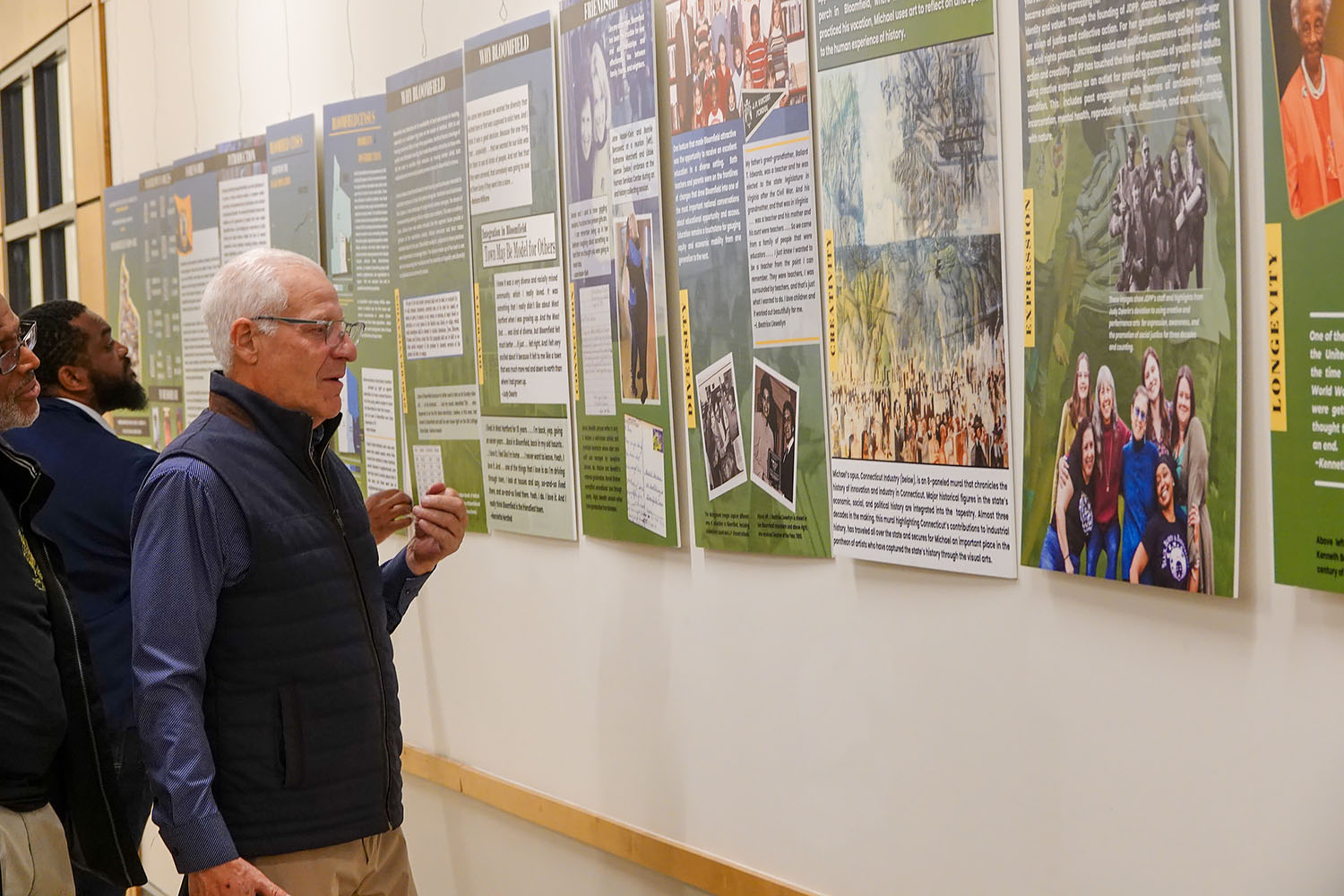A new exhibition at the William Benton Museum of Art celebrates the contributions of Minnie Negoro, a former professor who laid the foundation for UConn’s ceramics program, while also highlighting her journey through one of the darkest chapters in U.S. history.
Curated by faculty in the College of Liberal Arts and Sciences (CLAS) with help from students, the exhibition tells the story of Negoro’s life — from her forced relocation to a Japanese American incarceration camp during World War II to her lasting influence as a beloved professor and artist.
Hana Maruyama, assistant professor of history and social and critical inquiry in CLAS and lead curator of the exhibition, hopes it will honor Negoro’s legacy at UConn while spotlighting the importance of public history.
“Her former students knew she had existed, her colleagues in the art department knew she had existed, but from the Asian American studies side, that kind of institutional memory had kind of been lost,” Maruyama says.
Rediscovering a Forgotten Story
Jason Chang—head of the Department of Social and Critical Inquiry, associate professor of history, and co-curator of the exhibition— first uncovered Negoro’s story while leading the former Asian and Asian American Studies Institute. Recognizing its significance, he partnered with Maruyama and a team of scholars and artists to examine Negoro’s impact at UConn. Their research soon uncovered an unexpected discovery—this year marks 60 years since Negoro’s arrival at the University.
Maruyama, who studies Japanese American incarceration and had family imprisoned at Heart Mountain, quickly realized that while Negoro had a profound impact on her students and the School of Fine Arts, little had been documented in archives or other public history sources.
Determined to preserve that legacy, Maruyama began seeking out information from Negoro’s former colleagues and students.
“One year is not a lot of time to create an exhibition,” says Maruyama, who previously worked at the Smithsonian Institution. “It’s very typical for an exhibition to take five to eight years, but I just think her story is so important and hasn’t gotten the attention that she deserved.”
From Internment to UConn Professor
Just a semester away from graduating from the University of California, Los Angeles, Negoro and her family were among the 125,000 Japanese Americans forcibly removed from the West Coast and placed in incarceration camps across the U.S. in 1942.
Although Negoro was an art major, she didn’t learn to use a potter’s wheel until she arrived at Heart Mountain, Wyoming. There, she was one of six people hired to work at the Heart Mountain Ceramics Plant, according to Maruyama.
She developed her skills through a government initiative to use imprisoned Japanese Americans to produce tableware for the U.S. Army and other incarceration camps. Despite the repressive circumstances, Negoro’s training at Heart Mountain launched her career and eventually paved the way for UConn’s ceramics program.
Negoro was able to leave Heart Mountain through a program that permitted Japanese American students to attend colleges outside the exclusion zone. Under the guidance of one of her mentors from Heart Mountain, she pursued an MFA at Alfred University.
After earning her degree, Negoro ran her own ceramics studio in New York for a decade and taught at institutions such as the Rhode Island School of Design and the Chouinard Art Institute in Los Angeles before arriving at UConn in 1965.
“They just kept renewing her contract and eventually she got on a tenure track and the rest is history,” Maruyama says. “She taught here for the next 20-plus years.”
Maruyama says now, decades later, many of Negoro’s former students are still eager to share how she impacted not only their education and careers but also their lives.
“They are so committed to preserving her legacy,” Maruyama says. “As an educator, it was inspiring for me to hear them talk about how much she impacted their lives.”
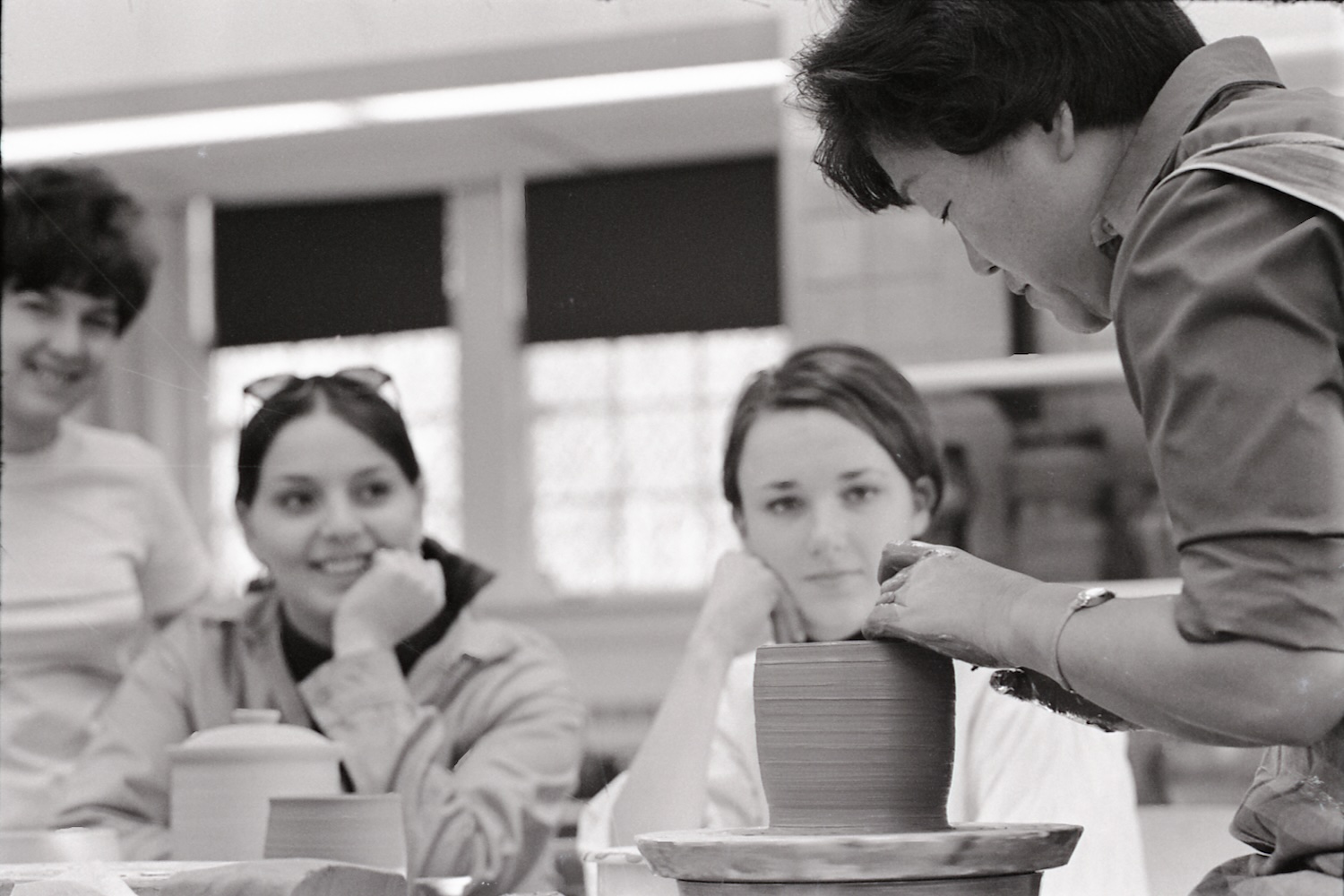
Students Help Share Negoro’s Story
To further honor Negoro’s legacy, Maruyama involved her own students in the process of putting together the exhibit. She revamped her spring 2024 “Topics in Public History” course to have them create an initial draft of the exhibition.
“The students were excited to be working on something that was going to go on display,” Maruyama says. “They put their hearts and souls into it.”
Everett Padro ’26 (CLAS), a history major, says he’s been interested in public history since childhood.
“I used to go to the Smithsonian because I have family members that work there,” he says. “I would just be blown away by not only the artifacts they had but how they organized and kept track of and cared for them.”
Padro, who is now considering a career in museum curation, was excited to learn Maruyama’s class would allow him to get some hands-on experience while also exploring the history of something close to home.
“It was a pleasant surprise getting to work so intimately with first-hand accounts and structuring this as a teamwork effort to create this exhibit,” Padro says.
According to Maruyama, students contributed to multiple aspects of the exhibit, including working on oral and digital histories, writing content, researching UConn’s special collections, and creating a social media campaign.
Padro appreciated the opportunity to work on his interests, choosing to work on digitally archiving old photos.
“I was interested to see how we can preserve and tell this story to future generations–not only who she was but how she’s relevant to the University,” Padro says.
A Lasting Legacy
The exhibit features images, artifacts, and writing that explain Negoro’s life and impact as a teacher, as well as examples of her work. It also showcases the work of alumni, many of whom credit her guidance for their success.
“What I find kind of incredible about her is that she also had a reputation for being a tough teacher,” Maruyama says. “She was making those undergrads do ceramics math, and ceramics chemistry. This was not just an art class. She really got into the science of ceramics and that’s not something that a lot of undergraduate ceramics programs do.”
The exhibit will remain on display until July 27, 2025. Maruyama hopes it will cement Negoro’s legacy at UConn while also bringing attention to the broader history of Japanese American incarceration.
“This history is still so personal for many of us,” she says. “Minnie Negoro’s story is about resilience, creativity, and the power of education. It’s about making sure we don’t forget.”
—
Minnie Negoro: From Heart Mountain to UConn, will be on display in the Benton Museum through July 2025. Hana Maruyama, Assistant Professor of History and Social and Critical Inquiry at UConn, will lead a guided tour of the exhibit on Friday, Feb. 21, 2025.
